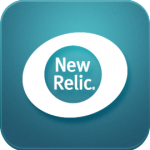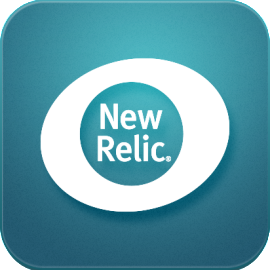Category: Cloud Based Software
New Relic
 New Relic (NYSE: NEWR), headquartered in San Francisco, California, becomes another addition to our Software sector coverage. Founded in 2007, the company provides a cloud software platform for software analytics. Consensus estimates call for revenue of $102 million and a Loss per Share (LPS) of about $1.00 for the period ending March 31, 2015, followed by revenue of $137 million and a similar Loss per Share for the fiscal year ending March 31, 2016.
New Relic (NYSE: NEWR), headquartered in San Francisco, California, becomes another addition to our Software sector coverage. Founded in 2007, the company provides a cloud software platform for software analytics. Consensus estimates call for revenue of $102 million and a Loss per Share (LPS) of about $1.00 for the period ending March 31, 2015, followed by revenue of $137 million and a similar Loss per Share for the fiscal year ending March 31, 2016.
New Relic’s five million share IPO took place on the NYSE on December 12, 2014 at $23.00 per share in a transaction led by Morgan Stanley, J.P. Morgan, Allen & Company, UBS, JMP Securities, and Raymond James. At a recent share price of $34, New Relic’s market cap is roughly $1.5 billion.
New Relic positions itself as a provider of next generation cloud software that analyzes the performance of software applications, including software that is accessed from mobile devices. One of its key features is the ability to collect, store and analyze data in real time and then diagnose software performance problems, and provide reports and alerts to IT professionals. New Relic’s software can also track user time spent on a particular website page, and pinpoint browser or operating system software code problems, response time, and user satisfaction.
As of the end of September 2014, New Relic had 10,590 “paid business accounts” and over 250,000 “users,” which it defines as an email address associated with an account that has deployed its software code, and from which it receives data from at least one application. Roughly 30 percent of sales comes from outside the US.
New Relic has a broad range of competitors in the software performance management category, including IBM, HP, Microsoft, Oracle, BMC Software, Compuware, Riverbed Technologies, Splunk, Google, and once publicly-traded but now privately-held Webtrends.
To see how New Relic screens against a comparable group of 55 Software IPOs of the last seven years, please contact Battle Road Research.
Opower: Providing Power to the People
 Based in Arlington, VA, Opower (NYSE: OPWR), provides cloud software to the utility industry. Opower’s software helps consumers gain insights into energy consumption, and ways to reduce energy costs. Founded in 2007, the company generated $89 million in sales in 2013, and operated at a $14 million loss. For 2014, Consensus estimates suggest the company will record $128 million in revenue and record a loss per share of $0.67. In 2015, revenues are expected to grow by 17 percent, and the company is expected to post a similar loss.
Based in Arlington, VA, Opower (NYSE: OPWR), provides cloud software to the utility industry. Opower’s software helps consumers gain insights into energy consumption, and ways to reduce energy costs. Founded in 2007, the company generated $89 million in sales in 2013, and operated at a $14 million loss. For 2014, Consensus estimates suggest the company will record $128 million in revenue and record a loss per share of $0.67. In 2015, revenues are expected to grow by 17 percent, and the company is expected to post a similar loss.
Opower debuted on the NYSE on April 3, 2014 in a 6.1 million share IPO, which opened at $19 per share, in a transaction that raised over $100 million for the company. The transaction was led by Morgan Stanley, Goldman Sachs, Allen & Company, Pacific Crest, and Canaccord Genuity. At a recent share price of $18.00, the company’s market cap. is about $880 million.
Opower sells software to public utilities which in turn provides their customers with important insights into their energy consumption and usage, including peak day alerts, consumption trends, and tips on how to reduce energy costs. Public utilities are under pressure from regulators to reduce the number of fossil fuel emitting power plants, utilize cleaner sources of energy, and reduce energy fees, in return for maintaining what is in many cases a near monopolistic position in the markets they serve. Public utilities, have, in a sense, been forced to expend some of their resources on energy efficiency programs through which they provide incentives to consumers to utilize more efficient methods for cooling and heating.
At the end of 2013, Opower served 93 utility companies in eight countries, including over half of the 50 largest utilities in the US. Recently, Opower launched a program at CLP Power Hong Kong, the country’s largest power company. In 2013, customer concentration was high, as Opower’s top 10 customers accounted for 62 percent of sales. Three of these customers—National Grid, Pacific Gas & Electric, and Exelon each accounted for more than 10 percent of sales. For the six months ended June 30th 2014, two customers each accounted for 11 percent of sales, so it would seem that customer concentration is beginning to decline.
Opower counts among its competitors privately-held Aclara and Tendril, as well as the Nest Labs division of Google. Post-IPO Opower has a strong balance sheet, with nearly $150 million in cash and no debt.
To learn how Opower screens against its cloud-based software peers in the Battle Road IPO Review Software coverage universe, please contact: info@battleroad.com.
- ‹ Previous
- 1
- 2
- 3
- 4
- Next ›

